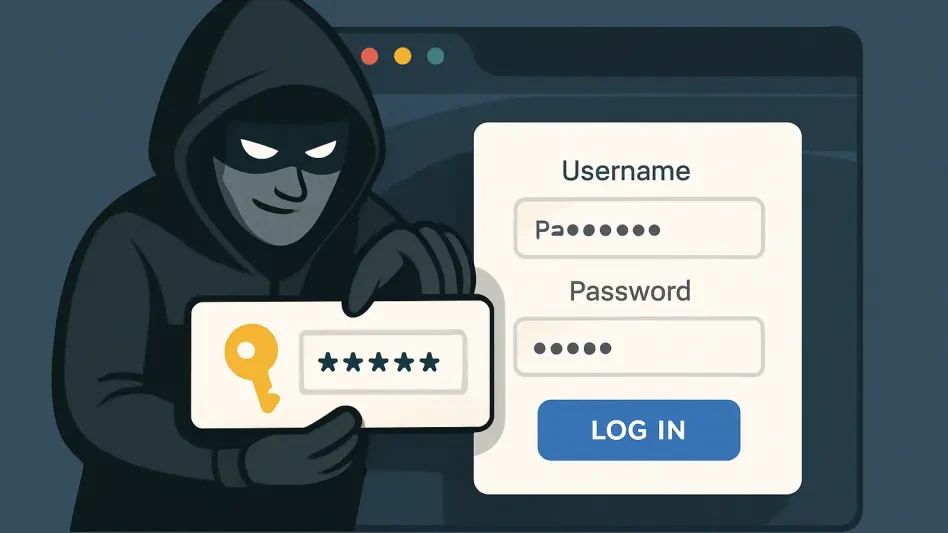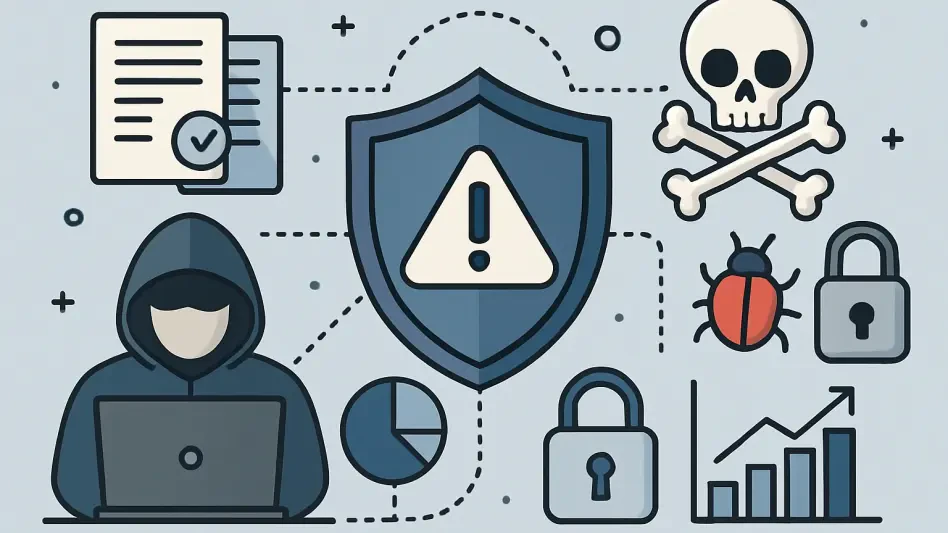In a digital landscape where security tools are paramount, a startling revelation has emerged that shakes the foundation of trust in password managers, critical utilities relied upon by millions to safeguard sensitive information. Recent research has uncovered a severe vulnerability affecting 11 widely used browser extensions, exposing users to a sophisticated threat that can steal login credentials, credit card details, and personal data with just a single click. This discovery, brought to light by security researcher Marek Tóth, highlights a pervasive flaw known as DOM-based extension clickjacking, which manipulates user interfaces to deceive unsuspecting individuals. With an estimated 40 million active installations at risk, the findings underscore a pressing need for heightened awareness and immediate action. As cyber threats continue to evolve, this issue serves as a stark reminder that even the most trusted tools can harbor hidden dangers, urging both developers and users to reevaluate their security practices in response to this alarming breach.
Uncovering the Threat Landscape
Exposing the Clickjacking Mechanism
A deep dive into the vulnerability reveals a cunning attack method that exploits the very design of password manager browser extensions. Known as DOM-based extension clickjacking, this technique allows malicious actors to alter the Document Object Model (DOM) of a website using JavaScript, rendering interactive elements inserted by password managers invisible to the user. Unsuspecting individuals, believing they are engaging with a legitimate interface, inadvertently provide access to sensitive information such as passwords, two-factor authentication codes, and even credit card numbers. The research demonstrated that all 11 tested extensions, including popular tools with massive user bases, were susceptible to this deception. This flaw capitalizes on the automatic filling of credentials not just for primary domains but also for subdomains, amplifying the risk when combined with other vulnerabilities like cross-site scripting (XSS). The ease with which attackers can execute this scheme raises critical concerns about the inherent trust placed in these security solutions.
Scope of Data at Risk
Beyond the mechanics of the attack, the breadth of data compromised by this vulnerability is staggering and affects multiple facets of user security. In the comprehensive analysis, it was found that login credentials, including time-based one-time passwords (TOTP), were exposed in 10 out of 11 tested products, while passkey authentication—a newer security standard—was vulnerable in 8 out of 11 cases. Additionally, credit card information was at risk in 6 out of 9 extensions, and personal details were compromised in 8 out of 10. These statistics paint a grim picture of the potential fallout, as a single click on a malicious site could lead to the theft of an entire digital identity. The diversity of affected data types underscores the severity of the issue, as attackers can exploit this flaw to access financial resources, personal accounts, and more. For millions of users relying on these tools to streamline and secure their online interactions, this revelation is a wake-up call to the hidden dangers lurking within seemingly protective software.
Industry Response and User Impact
Delays in Addressing the Flaw
Turning to the response from password manager providers, a troubling trend of delayed action emerges despite the critical nature of the vulnerability. Although the issue was reported earlier this year, with public disclosure scheduled for later in the current period, several major extensions have yet to implement comprehensive fixes. Among those lagging are well-known tools with significant user bases, collectively leaving an estimated 32.7 million individuals exposed to potential attacks. In contrast, one provider released a patch in a recent update, proving that swift resolution is achievable with the right prioritization. This disparity in response times highlights a broader concern within the cybersecurity industry about the urgency and accountability required to protect users from emerging threats. The slow pace of updates not only jeopardizes user trust but also amplifies the window of opportunity for malicious actors to exploit these flaws on a massive scale.
Practical Steps for Mitigation
While waiting for comprehensive fixes from providers, users are not entirely defenseless against this sophisticated threat, as interim measures can offer some protection. Security researcher Marek Tóth advises those using Chromium-based browsers to adjust extension settings to “on-click” access for websites, granting manual control over autocomplete functions. This adjustment prevents automatic filling of sensitive data on potentially malicious sites, reducing the likelihood of falling victim to clickjacking schemes. However, such mitigations are temporary and far from foolproof, as they rely on user vigilance and do not address the root cause of the vulnerability. The burden of security, in this case, shifts partially to individuals, who must navigate complex settings and remain cautious of every online interaction. This situation emphasizes the need for developers to expedite robust solutions, ensuring that tools designed to enhance security do not instead become conduits for data theft and privacy breaches.
Reflections on a Persistent Challenge
Lessons Learned from the Exposure
Looking back, the exposure of DOM-based extension clickjacking in password managers served as a critical lesson for the cybersecurity community, revealing how even trusted tools could harbor significant weaknesses. The ease with which attackers manipulated user interfaces to steal sensitive information exposed a fundamental gap in design and oversight. Reflecting on the varied responses from providers, it became evident that proactive and rapid action was essential to maintaining user trust. The fact that millions remained at risk due to delayed updates underscored the importance of prioritizing security patches over other development goals. This incident also highlighted the shared responsibility between developers and users in safeguarding digital assets, as temporary mitigations could only go so far. Ultimately, the episode prompted a reevaluation of how security tools were built and maintained, pushing for stricter standards to prevent similar vulnerabilities from emerging in the future.
Charting a Path Forward
As the dust settled on this alarming discovery, the path forward demanded actionable strategies to fortify defenses against evolving cyber threats. Developers were urged to adopt more rigorous testing protocols and faster response mechanisms to address vulnerabilities before they could be widely exploited. For users, staying informed about potential risks and adopting recommended security practices, such as manually controlling autocomplete features, became vital steps in personal protection. Industry-wide collaboration also emerged as a key consideration, with calls for shared knowledge and resources to tackle common threats more effectively. Moving ahead, integrating advanced safeguards into password managers—such as enhanced DOM protection and user interaction verification—offered a promising avenue to rebuild confidence. This incident, while sobering, paved the way for stronger, more resilient security solutions, ensuring that the tools meant to protect digital lives did not inadvertently become gateways for compromise.








